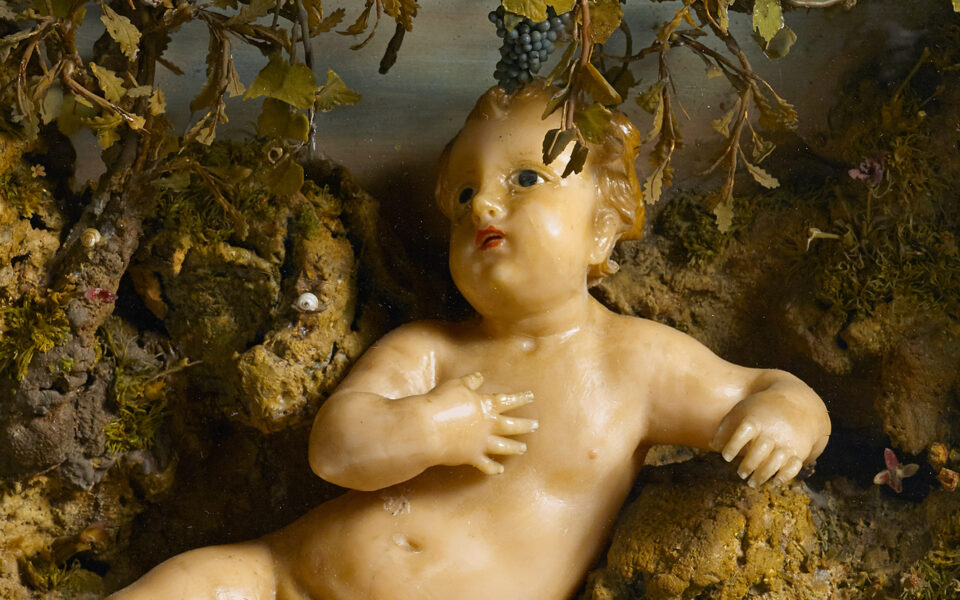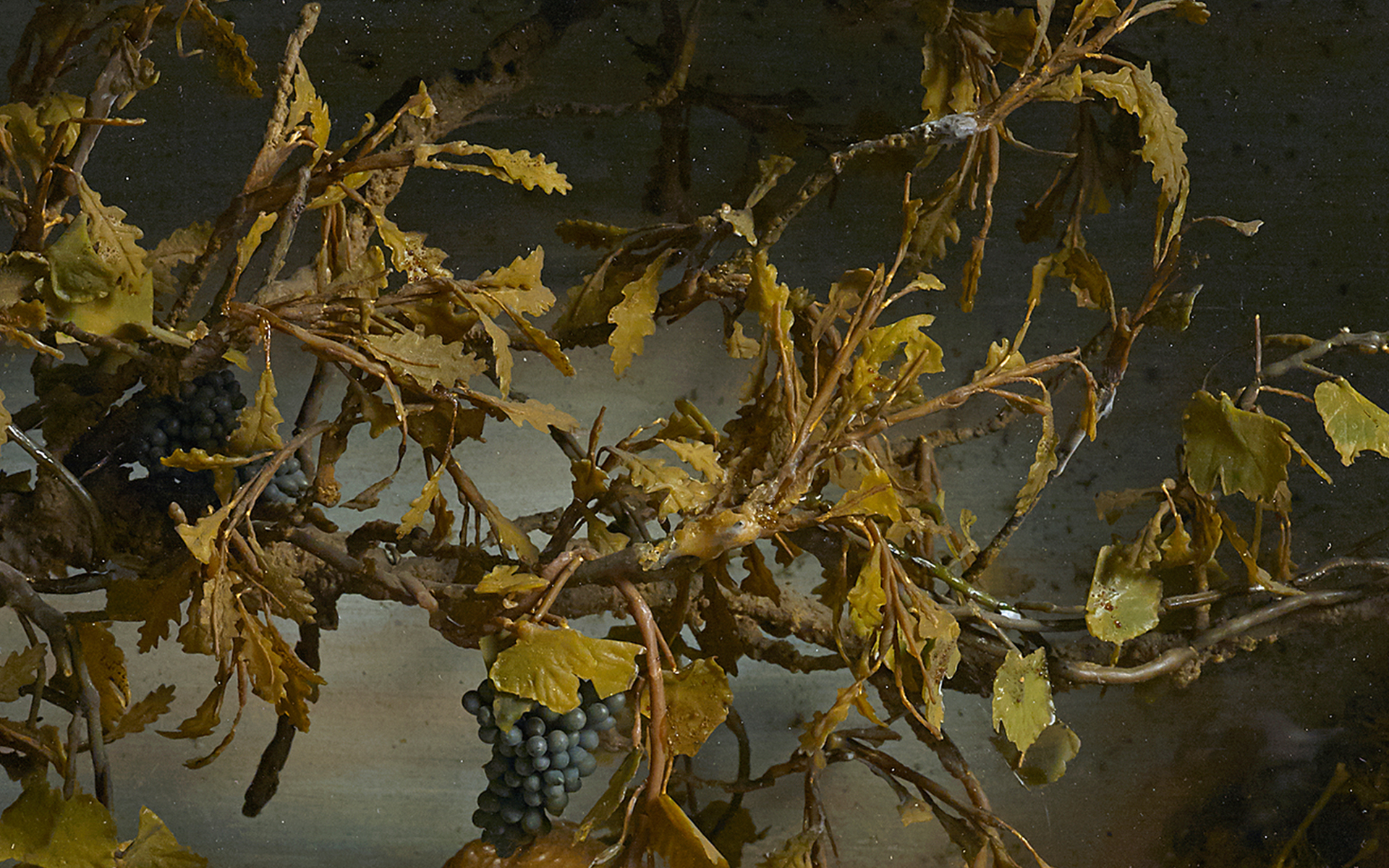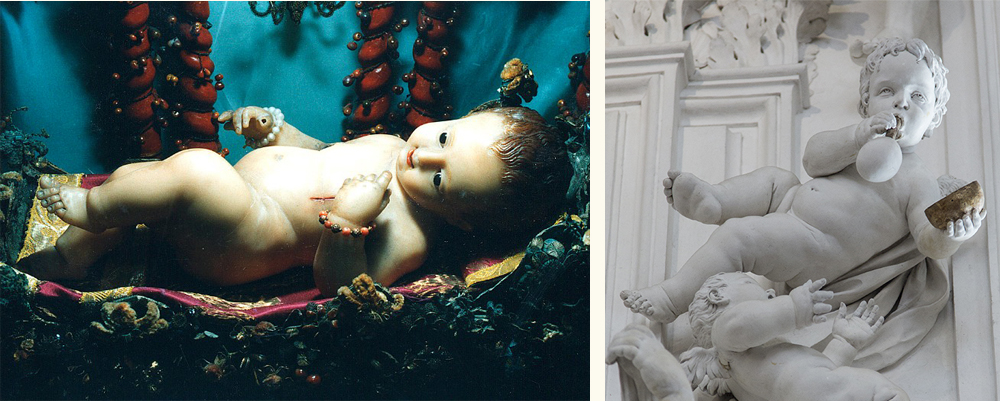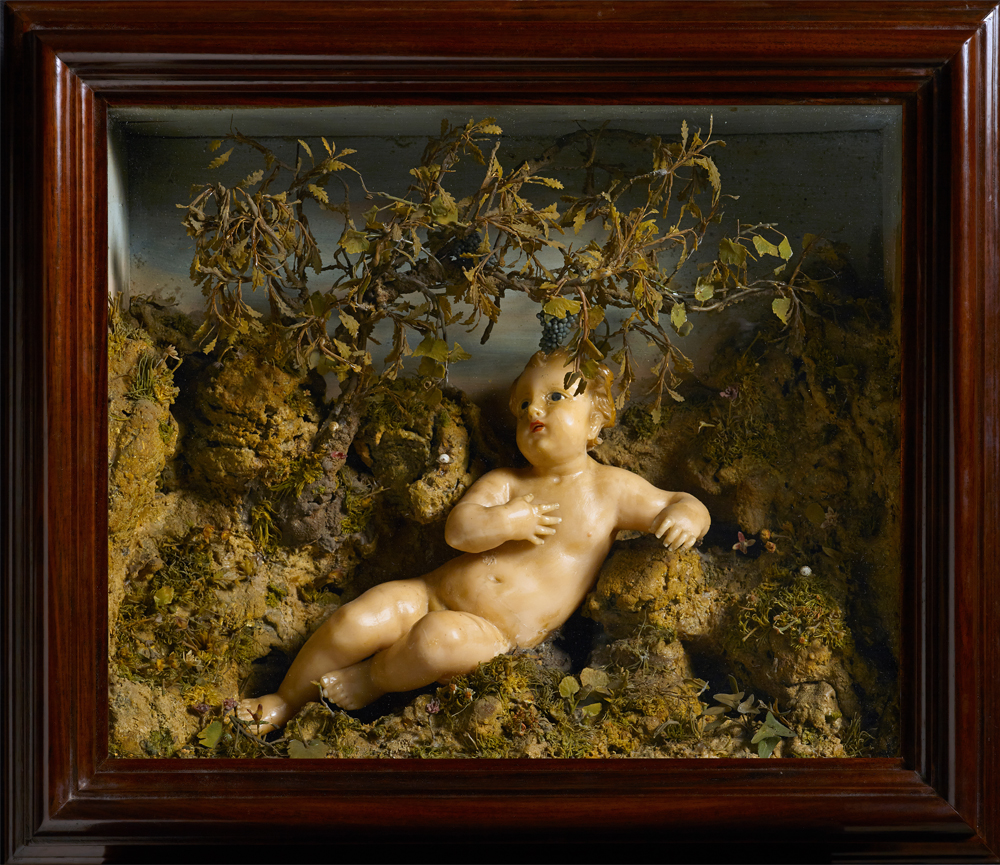
A Delicate 18th century Wax ‘Bambinello’
A wide and deep frame encloses the figure of the Child Jesus placed in a landscape at sunset. The Redeemer is represented as a naked little boy, resting on his side, with the right hand on his chest, the eyes looking upwards, and his mouth half open.
The scene is rich in meaningful details: Jesus looks away, alluding to the forthcoming Passion, and among the grass blades we recognize some flowers with evident symbolic content. White thistle refers to the sufferings and to the Crown of thorns; daisies are the symbol of Jesus’ innocence; the slender violet alludes to the Lent color and stands for the humility of the Son. Finally the vine -hanging from an oak tree- recalls the correlation between wine and blood, a very important moment in the Mass ceremony, and therefore it constitutes a clear prefiguration of the Last Supper.

Several features explain the original context for this work, that must be related to the Kingdom of the Two Sicilies between the 17th and the 18th century, a moment of extraordinary importance for the Italian wax-modelling. Particularly, the very minute and detailed wax ‘scenography’ connects the present relief to the well-known works by Lo Giudice, owners of one of the most important wax-modelling workshops in Palermo (Grasso and Gulisano 2011).
Starting from the image of the Nativity, which was born in the medieval Franciscan context, the cult of the Christ Child, worshipped individually, spread throughout Europe from the 16th century onwards.
Especially in Sicily, between the late 17th and the early 18th century, the diffusion of the wax “bambinelli” placed inside glass cases is well attested: the present work belongs to this typology, originating in women’s religious orders (see Grasso and Gulisano 2011, p. 126-134; T. Crivello 2014).

These wax reliefs made of various materials are generally extremely fragile and they often appear damaged, whereas the present one is in a rather exceptional state of conservation despite the considerable size of the figure, whose very soft modelling – another reference to Sicilian Baroque culture – recalls the stucco works by the great Palermo sculptor Giacomo Serpotta.

Sicilian wax modeller
BABY JESUS
Polychrome waxes and various media
Southern Italy (Sicily)
Second half of 18th century
Cm 55 x 47,5h (frame included)
References: Congresso internazionale sulla ceroplastica nella scienza e nell’arte, Atti del I congresso, Firenze 1977; S.Grasso – M. C. Gulisano, Mondi in Miniatura. Le cere artistiche nella Sicilia del Settecento, Palermo 2011; T. Crivello, L’iconografia del Gesù Bambino nella ceroplastica, in OADI, IX, 2014.
© 2013 – 2024 cesatiecesati.com | Please do not reproduce without our expressed written consent
Alessandro Cesati, Via San Giovanni sul Muro, 3 – 20121 Milano – P.IVA: IT06833070151